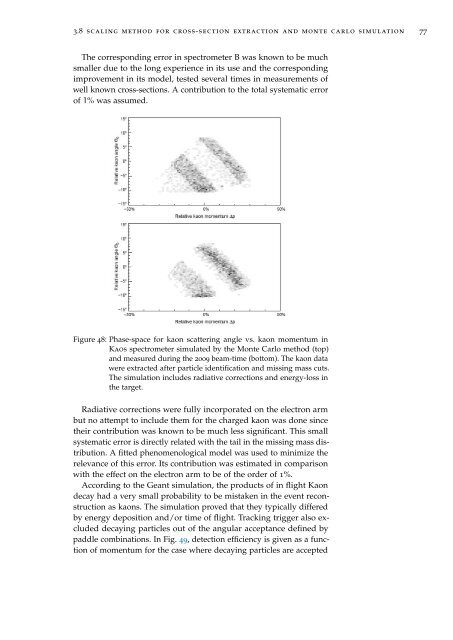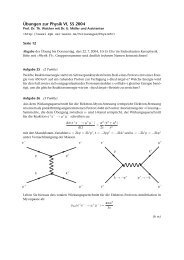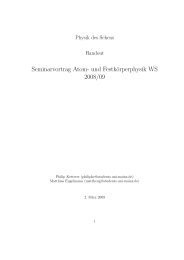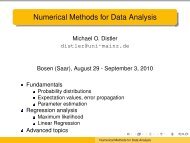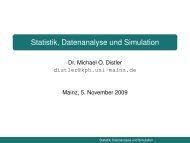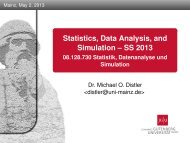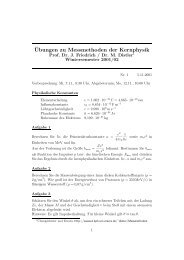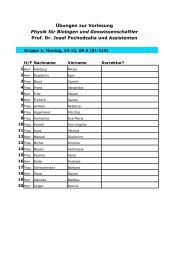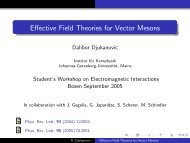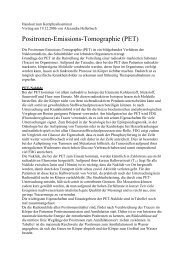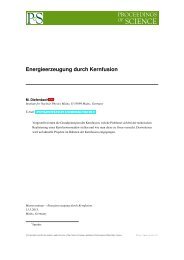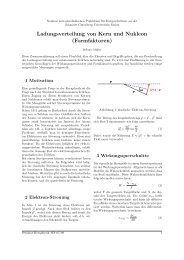A Classic Thesis Style - Johannes Gutenberg-Universität Mainz
A Classic Thesis Style - Johannes Gutenberg-Universität Mainz
A Classic Thesis Style - Johannes Gutenberg-Universität Mainz
You also want an ePaper? Increase the reach of your titles
YUMPU automatically turns print PDFs into web optimized ePapers that Google loves.
3.8 scaling method for cross-section extraction and monte carlo simulation 77<br />
The corresponding error in spectrometer B was known to be much<br />
smaller due to the long experience in its use and the corresponding<br />
improvement in its model, tested several times in measurements of<br />
well known cross-sections. A contribution to the total systematic error<br />
of 1% was assumed.<br />
Figure 48: Phase-space for kaon scattering angle vs. kaon momentum in<br />
Kaos spectrometer simulated by the Monte Carlo method (top)<br />
and measured during the 2009 beam-time (bottom). The kaon data<br />
were extracted after particle identification and missing mass cuts.<br />
The simulation includes radiative corrections and energy-loss in<br />
the target.<br />
Radiative corrections were fully incorporated on the electron arm<br />
but no attempt to include them for the charged kaon was done since<br />
their contribution was known to be much less significant. This small<br />
systematic error is directly related with the tail in the missing mass distribution.<br />
A fitted phenomenological model was used to minimize the<br />
relevance of this error. Its contribution was estimated in comparison<br />
with the effect on the electron arm to be of the order of 1%.<br />
According to the Geant simulation, the products of in flight Kaon<br />
decay had a very small probability to be mistaken in the event reconstruction<br />
as kaons. The simulation proved that they typically differed<br />
by energy deposition and/or time of flight. Tracking trigger also excluded<br />
decaying particles out of the angular acceptance defined by<br />
paddle combinations. In Fig. 49, detection efficiency is given as a function<br />
of momentum for the case where decaying particles are accepted


